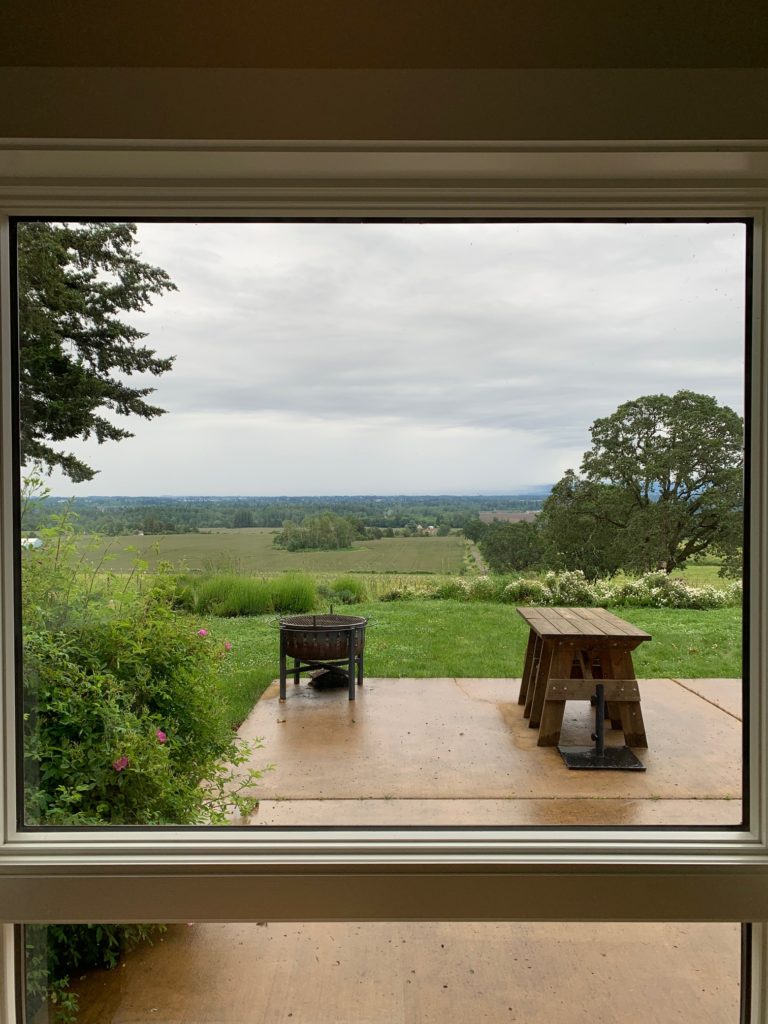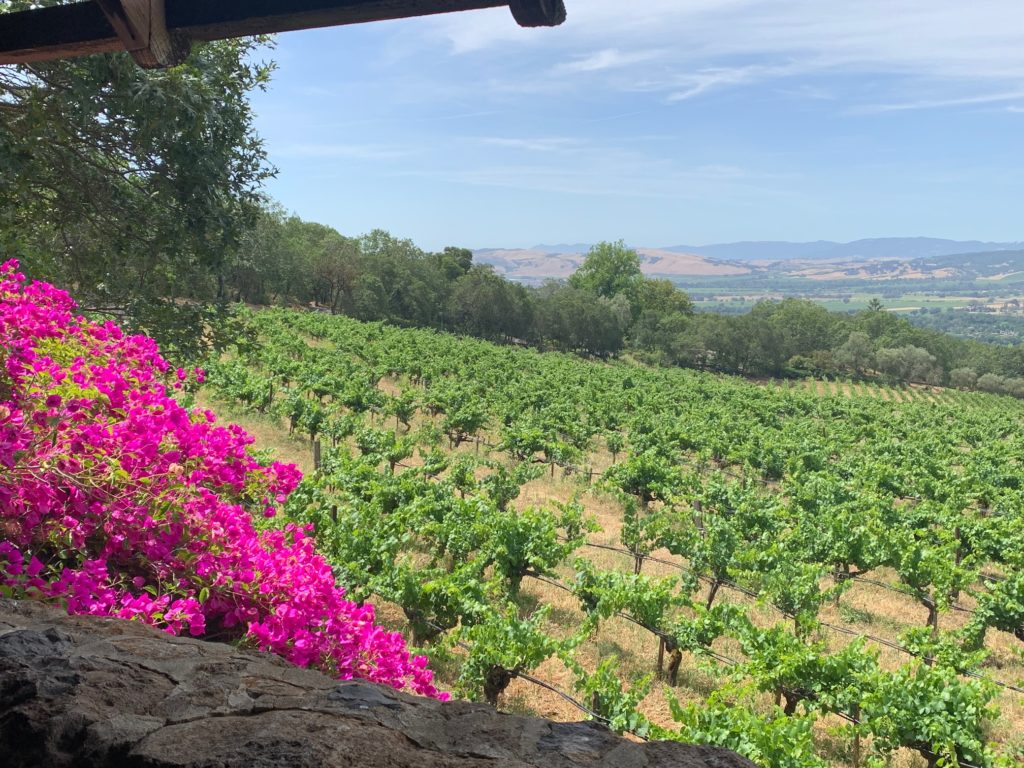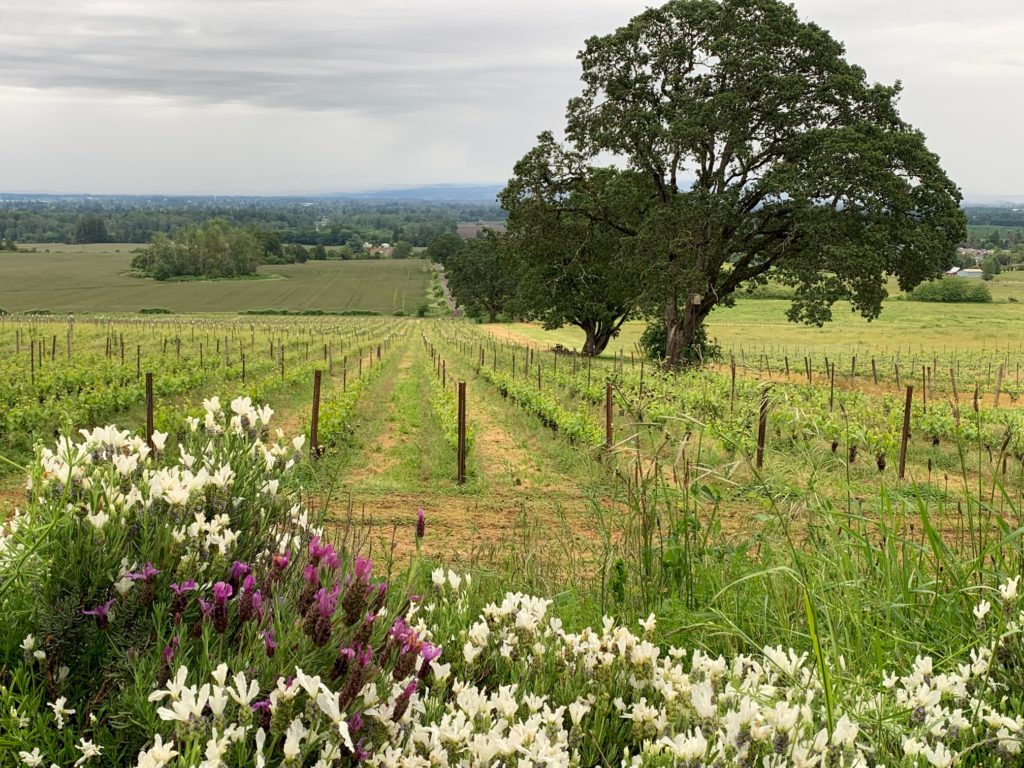Quick, what do Oregon’s Willamette Valley and California’s Sonoma Valley have in common?
For one thing, they are both located on the US west coast. For another, both American Viticultural Areas (AVAs) are home to numerous wineries that specialize in the classic Burgundian varietals: Chardonnay and Pinot Noir. Indeed – although other AVAs may disagree – Sonoma and Willamette are widely considered to be among the leading US regions for wines made from these two grapes.
Willamette and Sonoma share at least two other key viticultural attributes: both have volcanic soils in part, and both regions are partially exposed to cool air, wind and fog coming in off the Pacific Ocean through gaps in their respective coastal mountain ranges. However, the two regions lie some 1,000 km apart, with the Willamette’s Eola-Amity Hills sub-region opposite the Van Duzer Corridor at 45º North, while southern Sonoma opposite the Petaluma Gap is at 38º North. That’s further than the latitudinal distance between, say, Alsace and Roussillon in France.
So how do two emblematic wineries – one from each region – compare and contrast in their respective interpretations of both Pinot Noir and Chardonnay? To answer this question, you could do far worse than visit Evesham Wood in the Eola-Amity Hills and Hanzell Vineyards in Sonoma. That was my recent quest.
***
Chris Lindemann points downhill towards the east from the tasting pavilion at Evesham Wood. “That’s the original Le Puits Sec vineyard planted by founder Russ Raney in 1986”, he says, noting its east-facing aspect and similar slope to Burgundy’s Cote d’Or. Behind us is the wooded crest of the Eola-Amity hills that protect this vineyard from the cool westerly winds which regularly blow through here. Le Puits Sec (named for the first well drilled here, which came up dry) has been fully organic since its inception. Its vines are closely-spaced and planted in volcanic basalt soils, leading to low yields and a gossamer-like elegance rare in American Pinot Noirs.
Chris is in charge of Education, Hospitality and Sales here, and shares a seemingly endless font of knowledge about the winery and its wines. Tasting through the range of both whites and reds from different vineyards and vintages reveals a fascinating diversity, but they all bear the stamp of authenticity that comes from terroir-driven winemaking.
Deeply influenced by Burgundian techniques, from the outset Raney took a similar approach to his vineyard and its wines: non-irrigated vines, minimal chemical use, low yields, minimal interference winemaking, and restrained oak use. And this considered yet not dogmatic approach – what French winemakers call la lutte raisonnée – shines through in wine after wine, with words like ethereal, elegant, delicate and filigreed constantly reappearing in my tasting notes. The wines of Evesham Wood, especially its various Pinot Noir bottlings – some of which are from contracted fruit off other single vineyards – are the opposite of the American blockbuster fruit bomb cliché.
In 2010 the Raneys retired to France and sold Evesham Wood to their winemaker Erin Nuccio and his wife Jordan, who today continue with the same philosophy. Evesham Wood is in safe hands.

Nuccio’s Haden Fig Chardonnay Juliette 2015 is a selection of the best barrels destined for his regular Willamette Valley bottling. It was barrel fermented, went through full malo-lactic fermentation, and spent 18 months in oak. Its struck match, reductive bouquet is leavened by lime, lemon peel, brioche and mushroom, leading to rich, complex, oak-influenced citrus and saline flavours, great structure and a long, tautly acidic finish. Perhaps a little cheekily, Nuccio calls this his ‘Puligny Montrachet’ compared to his Le Puit Sec ‘Chassagne Montrachet’.
As for the several Pinot Noirs tasted, including wines from both the Croft and Sojeau single vineyards, the standout wine for me was Le Puits Sec Pinot Noir 2013, which at nine years was stony, mineral and gravelly, with saline notes over refined red and black fruits and smoked meats. An ethereal, filigreed wine, still evolving, layered, complex and long. So much going on…

***
A couple of days later, I find myself negotiating a narrow gravel road up into the sere hills above the town of Sonoma, to arrive at the gates of Hanzell Vineyards. Hanzell was one of the pioneering wineries in these parts: founder James Zellerbach first planted both Chardonnay and Pinot Noir here in 1953, and these thick, gnarly old vines are still going strong in the vineyard at the top of a natural amphitheatre facing southwest just below the winery buildings. Pulling up, we are met by our host Tony Gibson, and it turns out we have the place to ourselves, as Hanzell is closed to the public on the day of our private visit.
Hanzell, like its Oregon comparator, is fully organic and practices regenerative agriculture across its entire 200 acres, of which just 46 acres are planted to vines. The farm provides a chemical-free sanctuary for both its domestic and native animals, and its no-till and diverse cover crop practises help protect wildlife and surrounding habitats from erosion and over-grazing, and sustain healthy soils.
Hanzell’s vineyards lie at between 500 and 850 feet above sea level, well above the hot Sonoma Valley floor below, and this elevation provides exposure to the cool westerly winds that typically blow in off the Pacific, helping to keep the vines healthy and disease-free. It also accounts for a significant diurnal temperature range, which keeps the grapes fresh, retains acidity and slows ripening.


Among a range of chardonnays we tasted, the Hanzell Vineyards Chardonnay 2019 is a blend of the estate’s vineyards, including a healthy portion of grapes off the original 1953 Ambassador’s Vineyard. First produced in 1957, this is the wine that put Hanzell – and Chardonnay – on the Sonoma map. It is aged 73% in stainless steel and just 27% in new oak. It offers up a haunting, complex nose of lime, brioche, coconut, hibiscus, and smoky almond nuttiness. It tasted rich, ripe, smoky, with creamy lime and great acidic length.
The Hanzell Vineyards Pinot Noir 2019 is the sister wine to the above, also a blend of the estate’s vineyards, including fruit off the original 1953 vineyard. It offered concentrated, perfumed aromas of strawberry, bing cherry, vanilla, hibiscus, violets and underlying smoked meat notes. On the palate it had fresh, bright bing cherry flavours along with that smoked meat layer, and a long, lithe finish. Quite different from the Evesham Wood pinots…
***
In conclusion, that old saw about comparisons being odious is probably apt: these are two quite different regions, with two different wineries offering distinct vinous expressions, reflecting their respective terroirs. Both were wonderful and the wines of each revealed their respective sense of place. One is not ‘better’ than the other. My advice: visit both!
